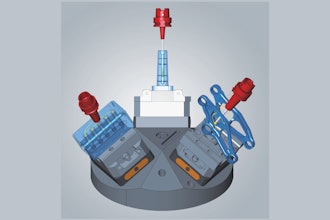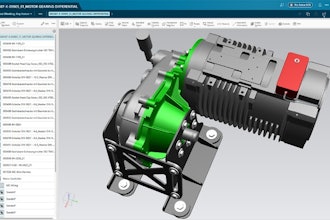The amount of data available today to businesses is astounding — and it keeps climbing at a rapid pace. In fact, 90 percent of the data available in early 2017 had been generated in the last two years, according to IBM.
Undoubtedly, food manufacturers have more information than ever to fuel better decision-making, but many merely scratch the surface by only using their ERP’s reporting capabilities. They’re using software to track inventory or labor, but they’re not applying business intelligence for actionable data that can result in continuous improvement. This is where technology can have the most impact and eliminate nagging issues.
Why is it crucial to proactively bring data into your decision-making, rather than merely reacting to the numbers your solution presents? Consider this hypothetical food supply chain situation.
The Case Of The Dough Deficiency
Imagine that you are a manufacturing company that produces frozen pizzas. Your ERP system has alerted you that you’ll be running short on pepperoni pizza come Friday. Based on your production schedule, you should be back on track Saturday. Still, going one day off target could result in significant revenue losses, in addition to reduced customer service levels.
Using the data provided by your ERP, you can approach the situation two ways: take tactical steps to find a temporary fix, or take strategic actions for a long-term solution. The tactical action in this scenario could be to ramp up production, running an extra shift to make sure enough pizzas are available for shipment. This reaction has the potential to be a costly one — rush ordering more stock, adjusting production for other lines and paying overtime for the additional labor.
Taking a strategic approach, you’ll use the data to observe conditions over time. Chances are your problem wasn’t created overnight — there’s likely a trend you need to catch. Does your supplier have a bad habit of running late? Does your inventory ordering not match up with expected demand? Is there a historical spike in orders during a certain time period?
Without an analytical approach providing actionable data, you run the risk of your problem happening over and over again. Next week or next month — it’s just a matter of time. Investing in business intelligence can help you determine the root of your problem, saving time, money and headaches down the road.
How Do I Develop Best Practices For Analytics?
Strategic actions require a dedication to data — but not just the raw numbers. As Harvard University professor Gary King astutely noted, “Big data is not about the data.” Successful food manufacturers are thinking about what the numbers mean, and they’re diving into analytics. If you’re ready to invest time and resources into strategic, data-driven decision making, you’ll need to start with a team dedicated to setting and maintaining standards based on the numbers. After all, data can’t physically do the work for you.
Start by determining what success looks like for your organization. Your team needs to agree on actionable — and measurable — goals, such as “decrease spoiled inventory by 10 percent” or “increase output by 20 percent.” Those goals will determine the types of information you need to monitor. In turn, you’ll be able to tune out the noise — the data you don’t need — hopefully relieving any analytics anxiety you may have.
The actual numbers upon which you’ll build your reporting are your Key Performance Indicators (KPIs). These KPIs may differ based on the product you produce, but most food manufacturers should track:
- Yield
- Cost per unit
- Downtime
- Overall Equipment Efficiency (OEE)
- Product and Customer Profitability
- Revenue Leakage
Once your team decides which KPIs to track, you’ll be ready to use the data in your ERP system more thoroughly for actionable insight. ERP systems provide data you need for tactical actions — integrating business intelligence with your ERP data provides trends and root cause information that leads to measurable and sustainable improvements.
Human Intelligence And Business Intelligence: A Winning Combination
There’s plenty of chatter today concerning what it means to operate a “smart supply chain,” but there’s no magic bullet that improves your processes without your experience and involvement. Technology is only as helpful as you allow it to be. Pairing the advanced analytics of an ERP specifically designed for process manufacturing with a knowledgeable team ready to interpret the data will have a positive impact on efficiency, productivity and profitability. With the right tools, there’s no reason to dread the data — you’ll be ready to embrace it.
Jack Payne is VP, Product Management & Solutions Consulting for Aptean























